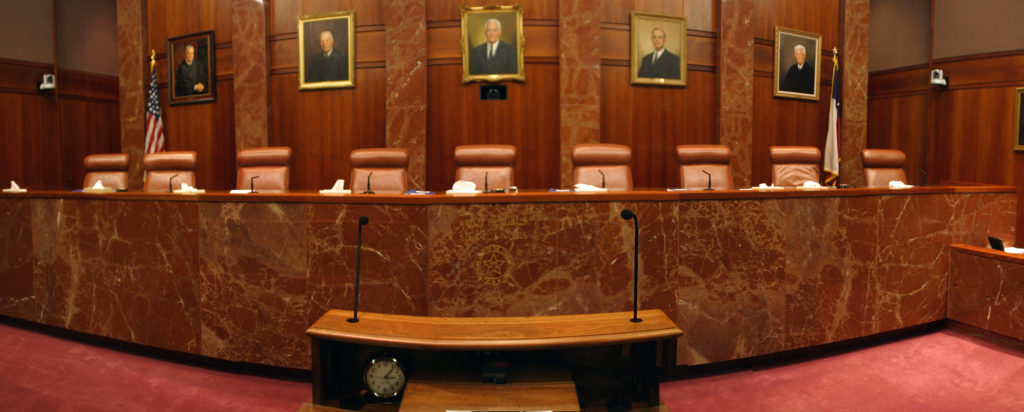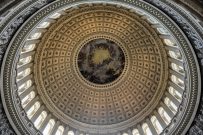Is it possible that the courts - one of our most important "auxiliary precautions" - are undermining republican liberty?
Some States Embrace an Advisory Role for Their High Courts
While the U.S. Constitution does not expressly forbid the U.S. Supreme Court from providing advisory opinions to Congress or the President, the Court famously declined the role early on when, as president, George Washington asked the justices to advise him on the country’s treaty obligations. Contrary to national practice, however, upwards of nineteen state high courts provided advisory opinions during some period in the past, and a little over half that number still do so today. While a minority practice among the states, it’s a sizeable minority. The practice, and attitudes of the different institutions toward the practice, highlight novels facets of institutional interaction in separation-of-power political systems. In this post I chat about the various, heterogeneous state practices. In my next post I discuss the institutional and constitutional design question.
Today courts in eleven states can provide advisory opinions. Or ten, depending whether one counts North Carolina. While the option appears to continue as an abstract possibility in North Carolina, and the state’s high court provided such opinions around 20 times between 1849 and 1949, the court proved hostile to the practice in several cases dating from the mid-1980s and early 1990s. Nonetheless, while noting when declining those requests that it looked on with “disfavor” on the practice, the North Carolina high court seems to have left a narrow door open for the practice when the requesting party can show “normal legal procedures” would not suffice to answer the question.
Eight other state supreme courts provided advisory opinions during the 19th century; all ended the practice in that century as well. In almost of these states in which the practice died off in the 19th century, the states’ high courts provided the opinions without constitutional or statutory authorization.
North Carolina excepted, all of the states today that continue the practice provide constitutional or statutory authorization for the practice. Setting aside North Carolina, judicial advisory opinions continue as a more or less active possibility in ten states today. The constitutions of eight of these states authorize advisory opinions (Colorado, Florida, Maine, Massachusetts, Michigan, New Hampshire, Rhode Island, and South Dakota); statutes authorize the practice in the two other states (Alabama and Delaware). Nonetheless, in a 2002 study, Alabama leads the states in number of advisory opinions, averaging around five per year, followed by New Hampshire at around three per year, then Massachusetts, Florida and Rhode Island at about two per year.
And par for the course for state constitutionalism in general, states offer a variety of practices for advisory opinions as well.
Governors may request advisory opinions from high courts in all of the states permitting the practice today. Legislatures can request them in all states except Florida and South Dakota. Executive councils can request opinions in Massachusetts and New Hampshire, and the Attorney General can request advisory opinions in Florida. When permitting the practice in the 19th Century, the Nebraska Supreme Court even answered requests from legislative committees.
In all cases except Michigan, advisory opinions concern unenacted policy proposals. Michigan limits advisory opinions to the period between a statute’s enactment and its effective date.
In U.S. states, legislative chambers request advisory opinions by majority-supported resolutions. This contrasts with “abstract review” in European countries, where legislative minorities can request expedited review of legislation.
One seemingly technical point nonetheless becomes substantively significant in the argument over the wisdom of allowing advisory opinions: In all states save one (Colorado), judges provide opinions only in their individual capacity as judges and not in the name of the court itself. This means the opinion binds neither the court nor the person or institution requesting the opinion; advisory opinions do not provide precedent that can be used future litigation. Critics of the practice, however, contest the ability of judges to separate themselves in subsequent legislation from positions they may have taken in advisory opinions. I plan to talk a bit more about this in my next post.
The advisory process moves at much quicker pace between request and opinion than does ordinary litigation. A 1949 article in the Indiana Law Journal by Oliver Field reported courts took about one month to respond to requests for advisory opinions, contrasted with seven years for courts to decide the constitutionality of legislation in ordinary litigation. In our AJPS article on the topic, Duke political scientist Georg Vanberg and I took a sample of forty-three more recent advisory opinions (with no pretentions to randomness) and found an average turnaround time of ten weeks and a median turnaround period of eight weeks.
Funny thing, though legislatures and executives seem more enthusiastic than state high courts toward the practice. This is an irony if we think of institutions in separation-of-power political systems checking and balancing one another. In the case of advisory opinions, the political institutions seem to invite the additional check and balance, while the courts, institution doing the checking and balancing, often seem reluctant to provide it. (More on this later.)
The phenomenon raises a puzzle regarding separation-of-power political systems when we conceive institutional interaction purely as checks and balances, “ambition counteracting ambition,” per Madison in Federalist 51. While not inaccurate, framing checks and balances as the sum of institutional interaction in separation-of-power systems invites us fundamentally to conceive that interaction as a constant-sum game between the institutions. We think the exercise of one institution’s power necessarily comes at the expense of the power of the other institution(s). For better or worse, however, the separated institutions in separation-of-power systems often use each other to advance their separate institutional interests. More about this in my next post, along with the related issue of the wisdom of advisory opinions more generally.



